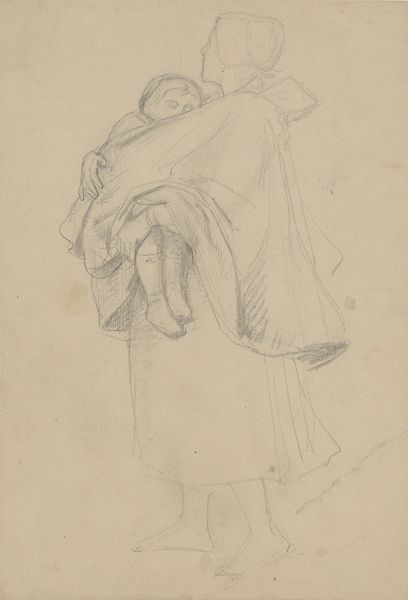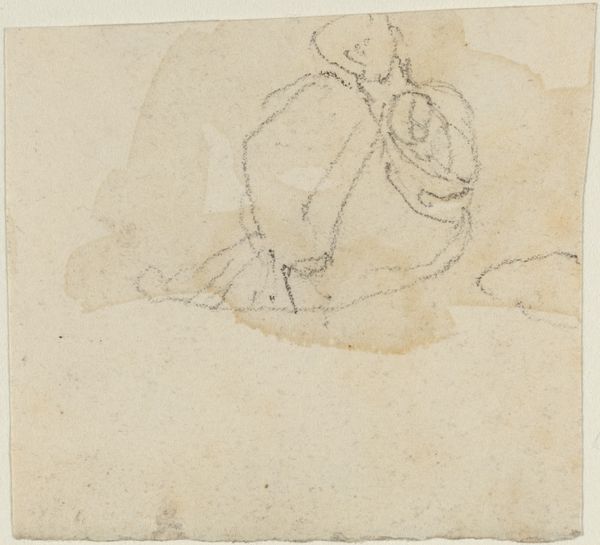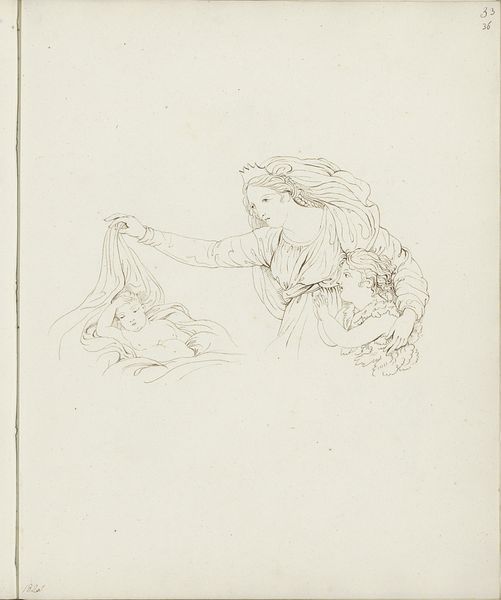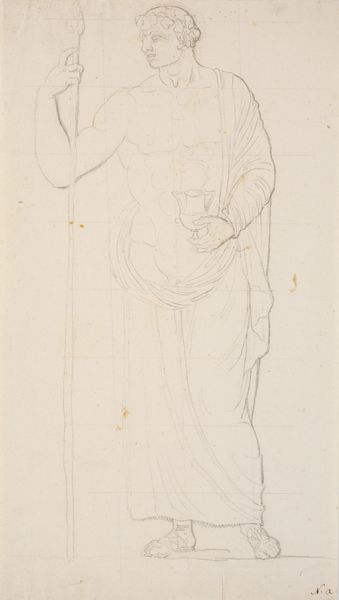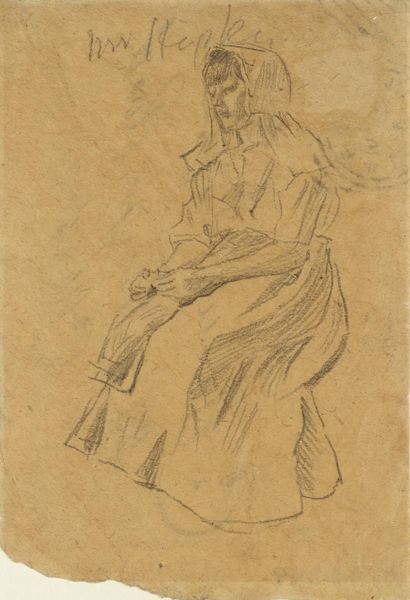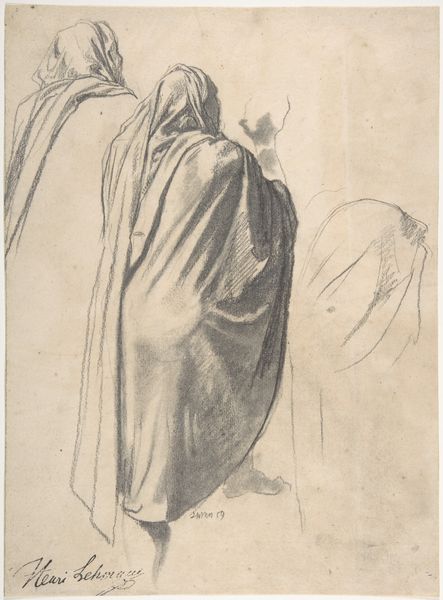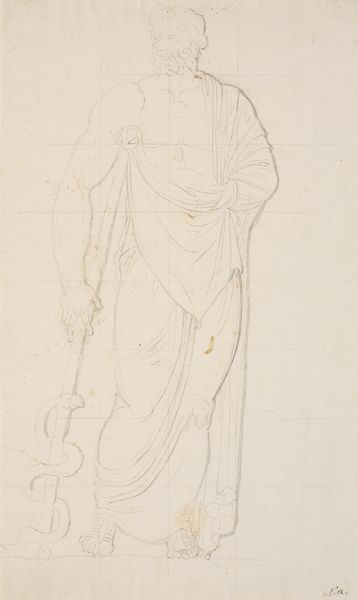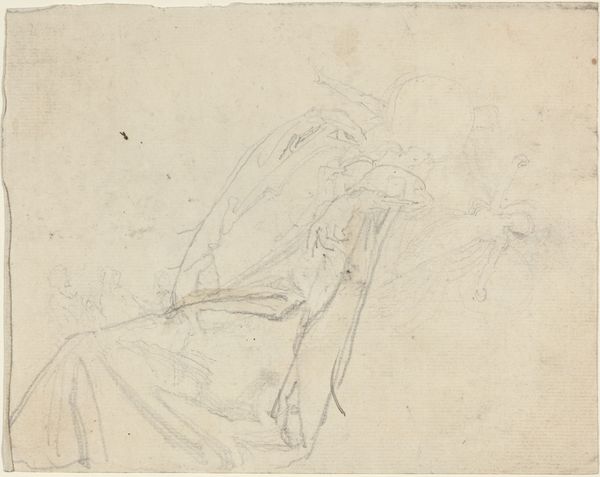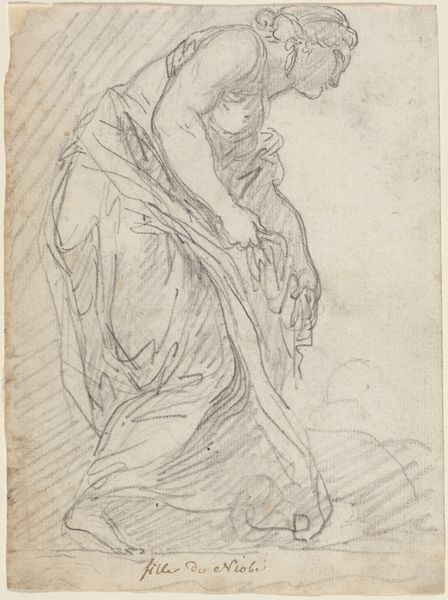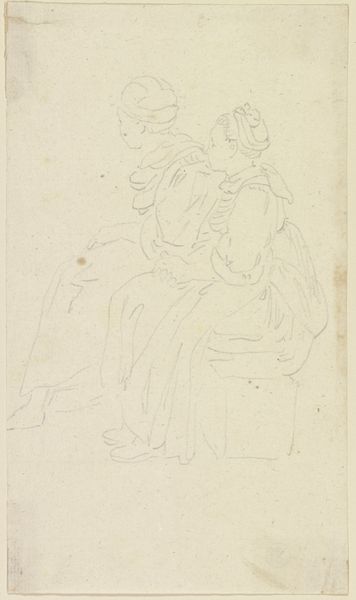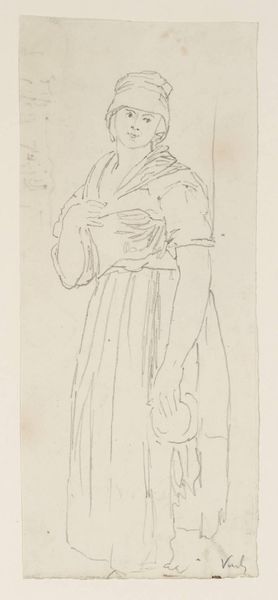
Rids af siddende læsende Kone (Kunstnerens moder) 1810 - 1848
0:00
0:00
drawing, pencil
#
portrait
#
drawing
#
figuration
#
romanticism
#
pencil
Dimensions: 135 mm (height) x 104 mm (width) (bladmaal)
Curator: There's such a beautiful quietude about this piece. It's a pencil drawing by Christen Købke, titled "Rids af siddende læsende Kone (Kunstnerens moder)," created sometime between 1810 and 1848. We know it as a portrait of the artist's mother. Editor: Yes, there is something very delicate in the marks and ephemeral in feeling; it captures a sense of someone deeply immersed in her own world. The visible process is powerful here; what pencil was used, and where was this paper produced, for example? This impacts our interpretation of Köbke's work as much as who is represented. Curator: Exactly. Köbke’s skillful use of line suggests form without ever truly defining it. He carefully depicts his mother absorbed in reading; we only see her from the back. But what kind of world was available to her through reading, and what sort of gendered constraints of life did she exist within, despite education? Editor: Precisely! What was the accessibility and politics of the written word for women during this period? These quiet moments often became vital sites for expanding knowledge and self-expression. There's also a fragility to it; pencil on paper always suggests a temporary state. In viewing, the visible material and its trace speaks directly to Köbke’s technique, labor, and ultimately this portrait's value, wouldn’t you say? Curator: Definitely. But in the same vein, it invites us to reflect on the countless overlooked moments of intellectual labor undertaken by women, specifically within the domestic sphere, often without recognition or visibility. This isn't just a picture of a woman reading. Editor: It speaks to material value systems! It's about revealing value of things commonly dismissed or perceived to have lesser material presence within artistic spaces! A perfect dialogue starter about who has voice, or whose lives were considered noteworthy enough for artistic consideration. Curator: It certainly opens a vital avenue of discussion about societal assumptions. The intimacy he captures offers an intriguing glimpse into the power and role of knowledge within one household at a very interesting moment in Danish history. Editor: I concur! This shows how process can be as revealing as the subject when understanding art’s meaning within society!
Comments
No comments
Be the first to comment and join the conversation on the ultimate creative platform.


